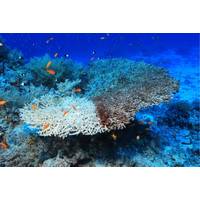
The Future of Coral Reef Protection
monitoring system.They hope to help save the world’s coral reefs from further decline, primarily caused by bleaching as a result of global warming. In the past two years, 75% of coral reefs worldwide have experienced bleaching-level heat stress.A collaborative project led by the University of South Australia is integrating remote sensing technologies with machine learning, AI and Geographic Information Systems (GIS) to monitor the damage.A multimodal platform will distil all research data relating to coral reefs, including underwater videos and photographs, satellite images, text files and time-sensor
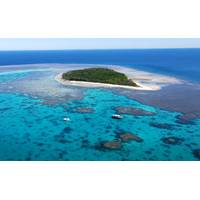
Integrated Data System for Coral Reefs Enables AI Analysis
Researchers at the University of South Australia are designing a global real-time monitoring system to help save the world’s coral reefs from further decline, primarily due to bleaching caused by global warming.Coral reefs worldwide are dying at an alarming rate, with 75% of reefs experiencing bleaching-level heat stress in the past two years.The World Heritage-listed Great Barrier Reef (GBR) has been decimated by severe bleaching events since 2016, exacerbated by ongoing crown-of-thorns starfish outbreaks and coastal development.A collaborative project led by the University of South Australia
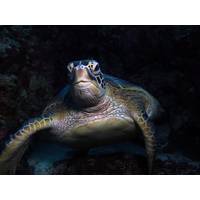
Carbon Dumping
, to remain, and the permitting processes for ongoing CCS projects may be expedited.”In 1996, Norway’s Sleipner became the world's first commercial CO2 storage project. Australia currently has two operational CCS projects: Gorgon under Barrow Island in Western Australia and Moomba in South Australia.Greenpeace says CCS has not been proven to work at the scale required to tackle the climate crisis anywhere in the world.However, as Geoscience Australia points out, the scientific consensus is that it will be almost impossible to reach net-zero emissions by 2050 without a significant global
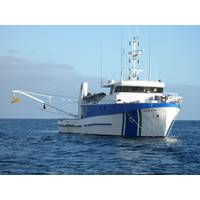
Glosten to Design Research Vessel for SARDI
Glosten announced it has been selected to develop the concept design of a coastal research vessel for the South Australian Research and Development Institute (SARDI).The naval architecture and marine engineering firm said it has been working closely with SARDI to refine the vessel’s capabilities and is beginning to develop a design that best fits their operational requirements: a 30-37-meter monohull with extended range, a launch and recovery system, the ability to perform fisheries research, and a multi-mission-friendly layout.The new vessel will replace the R/V Ngerin and support SARDI’s
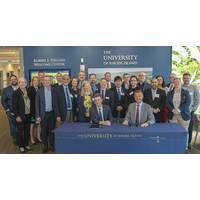
New Partnership Strengthens US-Australia Subsea Tech Research
for impactful on-site training, contributing to the advancement of Australian and U.S. joint interests.The pioneering agreement is a significant step in fostering closer U.S.-Australia research cooperation on the largest infrastructure investment in Australia’s history and signifies South Australia’s strategic position at the heart of Australia’s continuous naval shipbuilding program, including both AUKUS pillars.“We are excited to build this relationship with Flinders University, which is emblematic of the collaborations we need to keep our undersea technology on the
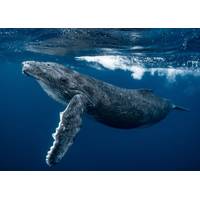
Mounting Evidence Shows Seismic Surveys Can Harm Marine Life
in the survey area.Scallops, lobsters and planktonDespite invertebrates making up around 92% of marine species, the impact of marine noise on these creatures has only recently been studied. This has shown a potential for harm.In the valuable southern rock lobster fishery, off the coasts of Victoria, South Australia and Tasmania, seismic air gun exposure damaged the sensory organ that provides a sense of gravity and balance, similar to the human inner ear. Affected lobsters also had impaired ability to right themselves when placed upside down, a reflex that underpins important behaviors such as escaping
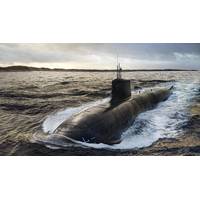
Australia Outlines $245 Billion Nuclear Submarine Plan
high water".Britain will build the first SSN-AUKUS boat, as the new class of submarines has been dubbed. The first Australian-built boat will be delivered in 2042, and one will be built every three years until the fleet reaches eight.Australian submarine construction will occur in the state of South Australia, where A$2 billion will be spent on infrastructure, creating 4,000 jobs, with another 5,500 direct shipyard jobs at the peak of construction. The government said that was double the workforce anticipated for a scrapped plan to build French-designed conventional submarines.A naval base in Perth
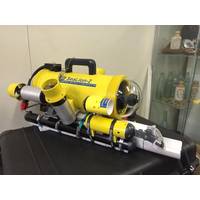
ROV Modified for Seashell Collection
ecosystems such as providing nesting materials, a home or attachment surface for algae, sea grass, sponges, and a host of other microorganisms. Fish also use seashells to hide from predators while hermit crabs use them as temporary shelters.ScubaCom has the only specimen seashell permit (EP0002) in South Australia which is closely managed by the SA Fisheries Department. Founder Steve Robinson says, “it is my aim to offer seashells to the world with a guarantee that all specimens have been responsibly collected ensuring species sustainability. We currently have a database of every seashell taken

Oi 50th "Voices": Professor Edward Hill, OBE, Chief Executive, National Oceanography Centre
and included with the November/December 2020 edition. NOTE: The editorial was written before the COVID-19 pandemic.Please register for Oi Connect here: bit.ly/34Klw4CBorn in the English Midlands city of Coventry, about as far from the sea as it is possible to get in Britain, I was brought up in South Australia – right by the coast. When I was eight years old, I returned from a four-week passage by ship to Southampton, and I guess the seeds were sown of becoming an Oceanographer.I read Applied Mathematics at the University of Sheffield before moving to Bangor University’s Marine Science


 February 2025
February 2025





